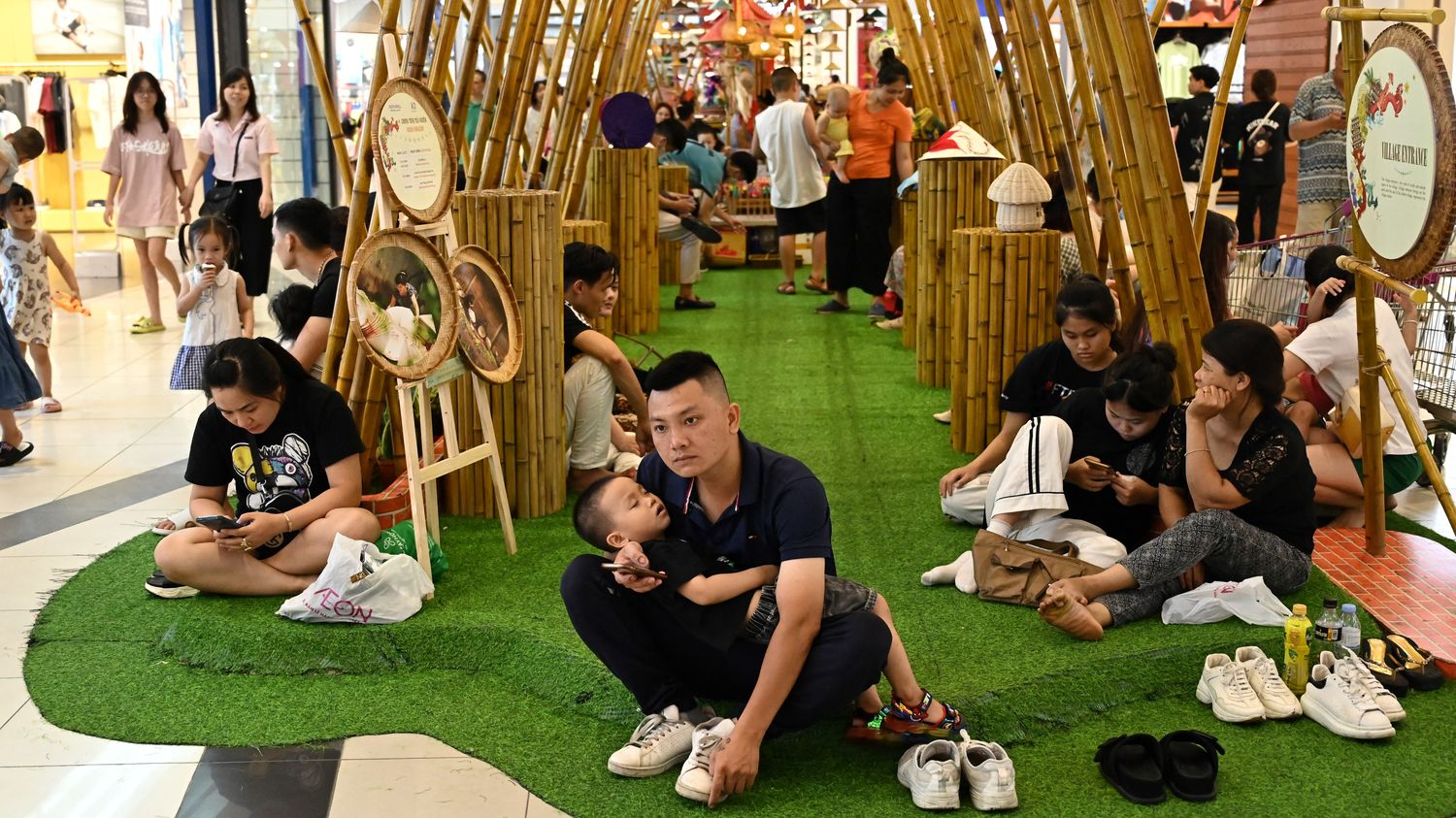For more than two months now, an extreme heat wave has hit the region and electricity shortages are increasing.
The story takes place on Thursday, June 2, in Hanoi, Vietnam. It is set in a hypermodern shopping center, the Aeon Mall. That day, thousands of people fill the aisles. But not for shopping, to take advantage of the air conditioning: young people, old people, parents with their children under their arms, equipped with large plaids to sit on, something to eat, play and keep busy for several hours while waiting. power back to their neighborhood.
>> Heatwave: it is urgent to adapt cities to future heat waves
Overwhelmed by the influx of what could be called “temporary climate refugees”, unable to stay at home due to the heat, the center ended up opening a large, very cool room for them. Throughout the weekend, the inhabitants came to sleep there on the ground, to rest, and above all to protect themselves from sometimes fatal heat stroke by lowering their body temperature.
In recent days, in northern Vietnam, the thermometer has peaked at 44°C. Consequence: the demand for electricity has skyrocketed, +22% in Hanoi between April and May according to the electricity company, which, to ensure the security of the network, is forced to multiply load shedding and cuts.
In recent days, in northern Vietnam, the thermometer has peaked at 44°C. Consequence: the demand for electricity has skyrocketed, +22% in Hanoi between April and May according to the electricity company, which, to ensure the security of the network, is forced to multiply load shedding and cuts.
All affected area
THE South China Morning Post, the Hong Kong daily which takes stock of the region, gives the floor to the director of an Indian public health institute in Gujarat. The problem, he says, is that “the populations are badly informed; even our officials still don’t know how to act in extreme heat“According to the World Bank, in the lower Mekong region alone (Thailand, Cambodia, Laos, Vietnam), up to six million people are at risk of being displaced by climate change by 2050.
Normally, at the beginning of June, the monsoon begins, a cooler season which also makes it possible to water the crops. But for the moment, the drought persists and the records continue to fall: 45°C in Thailand, 43.8°C in eastern Burma…
Dhaka, the capital of Bangladesh, recorded its highest temperature since the 1960s, with 40.4°C. And as bad news never comes alone, the country had to close its largest power plant on Monday, for lack of money to buy the coal necessary for its operation. And the load shedding will multiply.
Six million displaced people?
How are these countries adapting to these heat waves which are set to recur? Modeled on the Hanoi mall, several countries have opened public cool rooms. Some cities have reduced their lighting at night. in the vietnamese capital, the streets of the city center were lit thirty minutes later than usual. But for the moment, everyone is tinkering, watching with concern the level of water which drops in the hydroelectric plants, and the lands which lack rain.
THE South China Morning Post, the Hong Kong daily which takes stock of the region, gives the floor to the director of an Indian public health institute in Gujarat. The problem, he says, is that “the populations are badly informed; even our officials still don’t know how to act in extreme heat“According to the World Bank, in the lower Mekong region alone (Thailand, Cambodia, Laos, Vietnam), up to six million people are at risk of being displaced by climate change by 2050.
